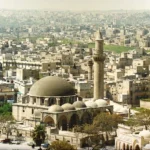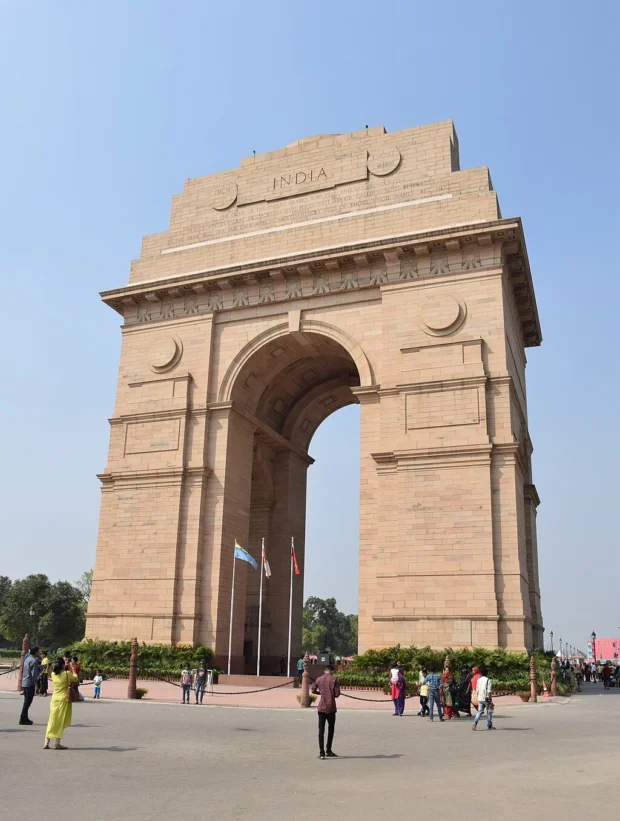Delhi’s India Gate stands as a solemn sentinel in the heart of the capital, a monument not only of stone but of memory. For those drawn to the layers beneath India’s urban sprawl, India Gate offers a remarkable blend of history, culture, and everyday life. Nestled amid bustling streets and shaded by old trees, it invites visitors to reflect on India’s past and enjoy its vibrant present. This post will guide you through practical directions, visitor insights, and fascinating historical narratives that deepen your appreciation of this iconic landmark.
Table of Contents
Finding Your Way to India Gate
India Gate is located at the eastern end of the Central Vista, a major boulevard in New Delhi. It is easily accessible by various modes of transport, connecting seamlessly to the city’s pulse.
Exploring Mumbai’s vibrant life and iconic sites offers a complementary experience to Delhi’s rich history; find more in Mumbai India guide.
Transport Options from City Center and Airport
From Connaught Place, a central commercial hub, you can take a quick taxi ride or hop on the Delhi Metro. The nearest metro station is Central Secretariat, just a 15-minute walk away through the leafy paths of Rajpath. If arriving from Indira Gandhi International Airport, a taxi or app-based ride will take about 45 minutes depending on traffic.
For travelers arriving at New Delhi Railway Station, rickshaws and taxis are readily available, and the metro Red Line connects to Central Secretariat station where you can walk or take a short auto-rickshaw ride.
Architecture and Historical Importance of India Gate
India Gate was designed by Sir Edwin Lutyens, the chief architect of New Delhi during British rule. Completed in 1931, it commemorates the 70,000 Indian soldiers who lost their lives fighting for the British Army in World War I and the Third Anglo-Afghan War. Standing at 42 meters tall, its sandstone archway resembles the Arc de Triomphe in Paris but carries a distinctively Indian narrative etched in names and stories.
Underneath the arch lies the Amar Jawan Jyoti, or the Flame of the Immortal Soldier, added after the 1971 Indo-Pak war, making the site a living memorial. This eternal flame flickers day and night, a poignant reminder of sacrifice embraced by visitors from all walks of life.
Best Time and Visitor Tips for India Gate
India Gate transforms with the changing light. The evenings, especially during cooler months from October to March, are ideal for a visit. The monument is beautifully illuminated after sunset, creating an atmosphere that blends solemnity with celebration.
- Early Mornings: For visitors seeking calm and reflection, early mornings offer a peaceful environment before the crowds arrive.
- Weekdays: To avoid heavy crowds, weekdays are preferable over weekends when families and groups gather for picnics.
- Evenings: The monument lit up at night is a memorable sight; street food vendors nearby allow you to savor local snacks as you stroll.
- Stay Hydrated and Wear Comfortable Shoes: The area around India Gate involves walking on gravel and paved paths, so practical footwear and water are essential.
Nearby Accommodation and Local Flavors
The vicinity around India Gate offers a range of accommodations, from heritage guesthouses to modern hotels. Staying nearby places you close to other landmarks like Rashtrapati Bhavan and the National Museum. It’s a comfortable base for those interested in walking tours of the Central Vista or attending cultural events held around the monument.
For a deeper dive into Delhi’s heritage, the Red Fort reveals another dimension of the city’s rich history and vibrant culture.
For a taste of Delhi’s culinary diversity, try local street food vendors around the India Gate lawns. Classic treats include ‘gol gappas’ (crispy hollow puris filled with spicy water), ‘chaat’ varieties, and hot tea from stalls that come alive in the evening. For a sit-down meal, nearby Connaught Place and Khan Market neighborhoods offer an array of cafes and restaurants serving traditional North Indian dishes as well as international cuisine.
Guided Tours and Reservation Insights
Visiting India Gate itself does not require an entry ticket or reservation; it is open to the public at all hours. However, joining a guided walking tour can enrich your experience by revealing stories behind the architecture and the soldiers commemorated here. Many city tour operators include India Gate in their historic walk or heritage cycle tour packages.
For those interested in the broader Central Vista precinct or special events such as the Republic Day parade, advance booking and permissions are required through official government channels. While India Gate’s lawns host occasional public events and festivals, it’s advisable to check current schedules on the official website of the Delhi Tourism department.
The Quiet Stories and Local Life Around India Gate
One fascinating aspect often missed by casual visitors is how India Gate functions as a communal space. Locals come here daily for morning walks, children play cricket, and artists paint the monument under the soft light of dawn. The nearby Canopy of Trees and the lush green lawns contrast with the busy avenues, offering a microcosm of Delhi life where history and daily rhythms coexist.
On certain days, you might witness schoolchildren visiting as part of guided history lessons or families gathering for ritual celebrations, blending the solemn with the celebratory. This layering of use over time adds depth to the stone arch’s narrative, reminding visitors that monuments live through the communities that cherish them.
Further Exploration and Official Resources
To plan your visit with up-to-date information, do check the Delhi Tourism official site. It provides details on events, access, and guided tours. Click to visit the Delhi Tourism homepage and explore the wealth of cultural heritage this city offers beyond India Gate.
India Gate is more than a monument; it’s a place where history, culture, and urban life intersect. Spending time here invites a moment of reflection on shared human stories and offers a gateway to understanding Delhi’s complex, multi-layered identity.

Traveler exploring cultural intersections, sharing reflections on similarities and differences between traditions, lifestyles, and food.
- India Gate, New Delhi, India by Mr. Debapriya Hore on Wikimedia Commons – cc by-sa 4.0
